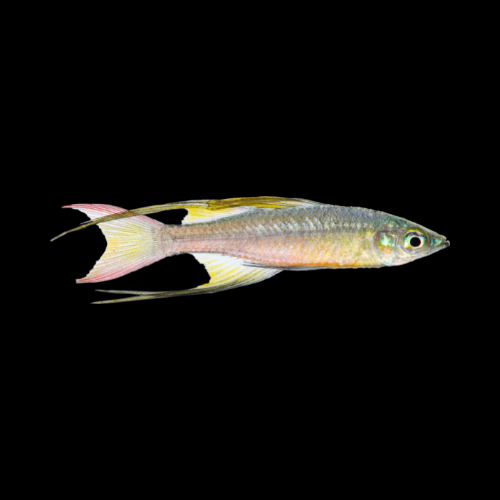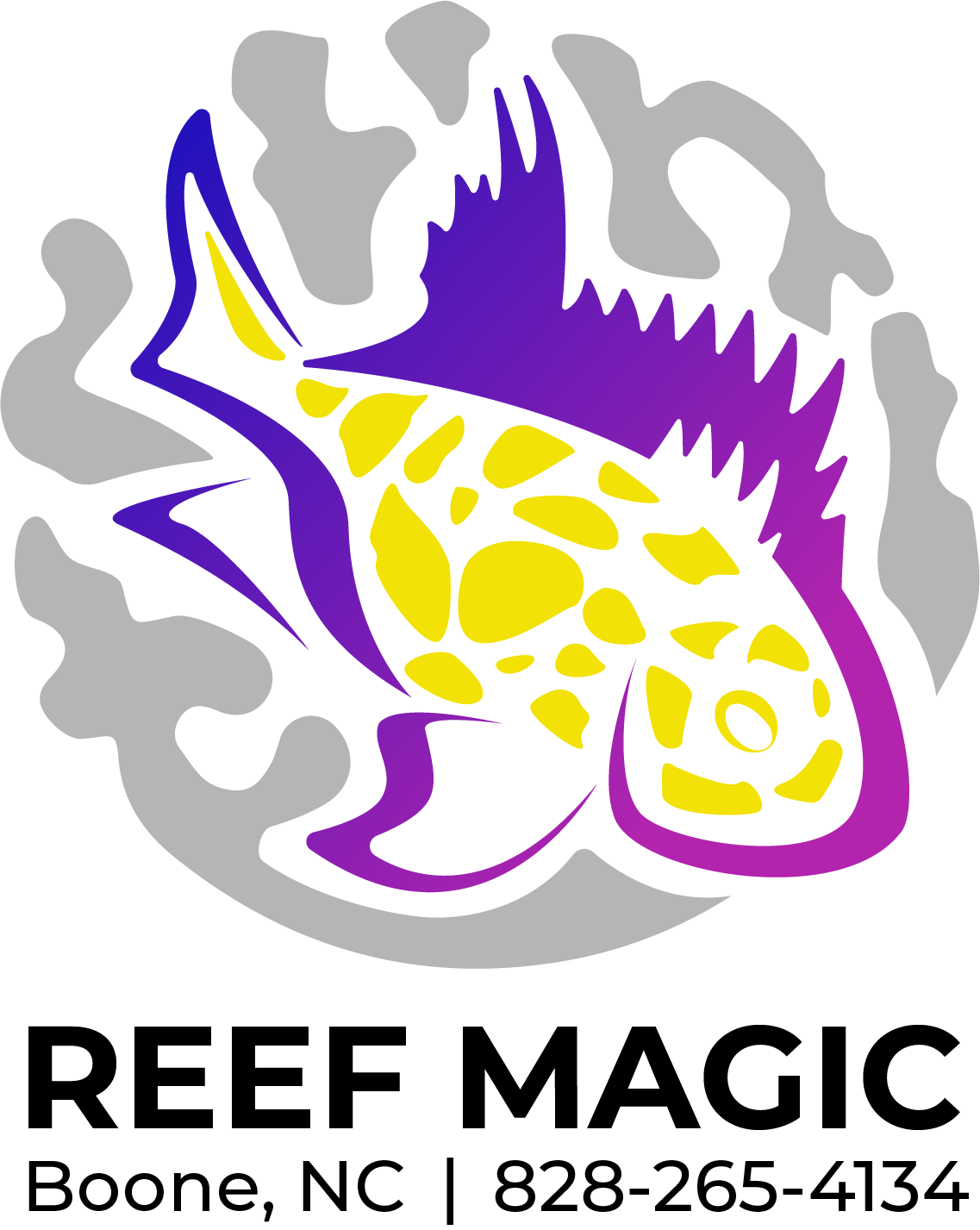 Image 1 of 1
Image 1 of 1


Rainbow - Threadfin
Rainbow fish is a general term that refers to various species of colorful freshwater fish belonging to the Melanotaeniidae family. While care requirements can vary slightly depending on the specific species within the rainbow fish group, here are some general guidelines for keeping rainbow fish:
Aquarium Size: Rainbow fish are active swimmers and appreciate spacious aquariums. The tank size will depend on the specific species and the number of fish you plan to keep. In general, a tank size of at least 20 gallons (75 liters) is recommended for a small group of rainbow fish. Larger tanks provide more swimming space and allow for the establishment of territories.
Water Parameters: Rainbow fish typically prefer slightly acidic to neutral water conditions. Aim for a pH range of 6.5 to 7.5 and a water temperature between 72-78°F (22-26°C). Rainbow fish can tolerate a range of water hardness, but a moderate hardness level of 5-15 dGH is generally suitable. Regularly monitor and maintain appropriate ammonia, nitrite, and nitrate levels.
Filtration: Use a filtration system suitable for the size of your aquarium to maintain excellent water quality. Consider using a hang-on-back (HOB) filter or a canister filter with a flow rate appropriate for your tank. Adequate filtration helps to remove waste, maintain water clarity, and provide oxygenation.
Decorations: Rainbow fish appreciate a well-decorated aquarium with plenty of open swimming space. Utilize plants, rocks, driftwood, and other ornaments to create a natural and visually appealing environment. Live plants can provide hiding places and help maintain water quality. Ensure that the decorations are stable and do not have sharp edges that could harm the fish.
Tank Mates: Rainbow fish are generally peaceful and can be kept with a variety of other community fish species. However, avoid keeping them with aggressive or fin-nipping fish. Rainbow fish tend to display their best colors and behavior when kept in groups, so consider keeping them in a small school of at least six individuals of the same species or a mix of compatible rainbow fish species.
Feeding: Rainbow fish are omnivorous and have a varied diet in the wild. Offer them a balanced diet consisting of high-quality flake or pellet food designed for tropical fish. Supplement their diet with frozen or live foods such as bloodworms, brine shrimp, daphnia, and small insects. Including some vegetable matter in their diet, such as spirulina-based flakes or blanched vegetables, can be beneficial.
Rainbow fish is a general term that refers to various species of colorful freshwater fish belonging to the Melanotaeniidae family. While care requirements can vary slightly depending on the specific species within the rainbow fish group, here are some general guidelines for keeping rainbow fish:
Aquarium Size: Rainbow fish are active swimmers and appreciate spacious aquariums. The tank size will depend on the specific species and the number of fish you plan to keep. In general, a tank size of at least 20 gallons (75 liters) is recommended for a small group of rainbow fish. Larger tanks provide more swimming space and allow for the establishment of territories.
Water Parameters: Rainbow fish typically prefer slightly acidic to neutral water conditions. Aim for a pH range of 6.5 to 7.5 and a water temperature between 72-78°F (22-26°C). Rainbow fish can tolerate a range of water hardness, but a moderate hardness level of 5-15 dGH is generally suitable. Regularly monitor and maintain appropriate ammonia, nitrite, and nitrate levels.
Filtration: Use a filtration system suitable for the size of your aquarium to maintain excellent water quality. Consider using a hang-on-back (HOB) filter or a canister filter with a flow rate appropriate for your tank. Adequate filtration helps to remove waste, maintain water clarity, and provide oxygenation.
Decorations: Rainbow fish appreciate a well-decorated aquarium with plenty of open swimming space. Utilize plants, rocks, driftwood, and other ornaments to create a natural and visually appealing environment. Live plants can provide hiding places and help maintain water quality. Ensure that the decorations are stable and do not have sharp edges that could harm the fish.
Tank Mates: Rainbow fish are generally peaceful and can be kept with a variety of other community fish species. However, avoid keeping them with aggressive or fin-nipping fish. Rainbow fish tend to display their best colors and behavior when kept in groups, so consider keeping them in a small school of at least six individuals of the same species or a mix of compatible rainbow fish species.
Feeding: Rainbow fish are omnivorous and have a varied diet in the wild. Offer them a balanced diet consisting of high-quality flake or pellet food designed for tropical fish. Supplement their diet with frozen or live foods such as bloodworms, brine shrimp, daphnia, and small insects. Including some vegetable matter in their diet, such as spirulina-based flakes or blanched vegetables, can be beneficial.

